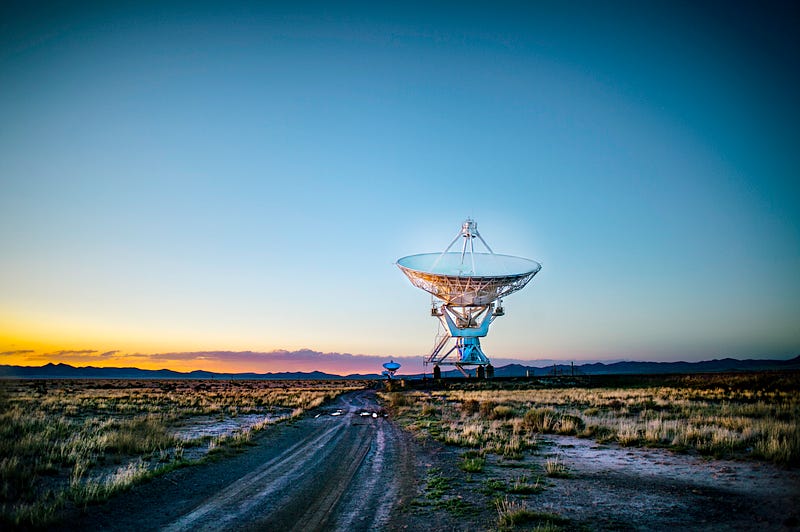The Future of Clean Energy: Caltech's Breakthrough in Space Power
Written on
Chapter 1: Understanding Orbiting Solar Power
In the urgent quest for sustainable energy solutions to combat the catastrophic impacts of climate change, scientists and engineers are racing to develop ultra-low carbon technologies. While wind and solar energy are making strides against fossil fuels, they have limitations: variable output, habitat disruption, and geographic constraints. Enter orbiting solar power, a revolutionary technology that could address these challenges. Recently, Caltech made a significant advance with its microsatellite, SSPD-1, achieving a world first by wirelessly transmitting energy in space. What does this mean for the future of solar energy?
Section 1.1: What is Orbiting Solar Power?
Orbiting solar power, also referred to as space-based solar power, enhances existing terrestrial solar technologies by taking them into space. On Earth, solar panel efficiency is affected by weather conditions and nighttime, and atmospheric interference diminishes sunlight. However, in space, there are no such limitations—the Sun shines continuously and unfiltered. By placing solar panels in orbit, we can harness this constant energy and beam it back to Earth. Although low-orbit satellites do experience night, geostationary satellites, ideal for this application, encounter only 14 minutes of darkness each day.
Subsection 1.1.1: The Advantages of Space-Based Energy

The near-constant exposure to sunlight allows orbiting solar power to generate 40 times more energy per square meter annually compared to ground-based solar systems. Since the primary carbon emissions from solar energy stem from manufacturing panels, orbiting solar could significantly reduce emissions per kilowatt-hour—especially if carbon-neutral fuels are used for rocket launches. Additionally, the consistent energy availability means that large, costly grid batteries won't be necessary, easing integration into current energy systems. The compact nature of Earth-based energy receivers means minimal habitat disruption, and their mobility allows for adaptability in energy distribution.
Section 1.2: Challenges to Implementation
While the concept of orbiting solar power has been around for decades, significant obstacles remain. The first challenge is the high cost of launching payloads into space. Historically, launching solar panels to low Earth orbit was prohibitively expensive, with costs reaching over $54,000 per kilogram. This situation is changing with SpaceX’s Starship, which aims to reduce launch costs to around $66 per kilogram.
Moreover, advances in lightweight solar panel technology can enhance energy density, allowing more power to be packed into each launch. The most significant hurdle, however, is efficiently transmitting this energy back to Earth without being affected by weather conditions.
Chapter 2: Caltech's SSPD-1 and Microwave Technology
The first video titled "How Electricity Actually Works" explains the fundamental principles of electricity, which are essential for understanding energy transmission technologies like those used in Caltech's SSPD-1.
Caltech's SSPD-1 aims to address the energy transmission challenge using microwave technology. Microwaves are effective at transferring power and can penetrate cloud cover, making them ideal for this application. The satellite features MAPLE (Microwave Array for Power-Transfer Low-Orbit Experiment), which consists of flexible, lightweight microwave transmitters that can focus energy on specific locations. The receiver on Earth will validate energy transmission, allowing further development of this groundbreaking technology.
In a recent statement, Ali Hajimiri, co-director of SSPP, confirmed that MAPLE has successfully transmitted power in space. This achievement is a monumental step toward demonstrating that orbiting solar technology is viable. As the system evolves, it could soon enable the first practical demonstrations of energy being beamed back to Earth.
The second video, "What Climate Science Tells Us, What It Doesn't, and Why It Matters | Steven Koonin," provides context on the importance of sustainable energy solutions in combating climate change.
While challenges remain regarding efficiency, Caltech's progress with MAPLE lays the groundwork for future advancements in orbiting solar power. We may soon see functional prototypes, with commercial applications potentially emerging within the decade. This innovation could be pivotal in addressing global energy needs and mitigating climate change impacts.
Thank you for your support! To continue reading content like this, consider following my project, Planet Earth And Beyond, on various platforms including Google News, Flipboard, Facebook, Instagram, LinkedIn, and Twitter.
Originally published on Planet Earth & Beyond
Sources: ESA, Axios, NASA, Space.com, Will Lockett, Caltech